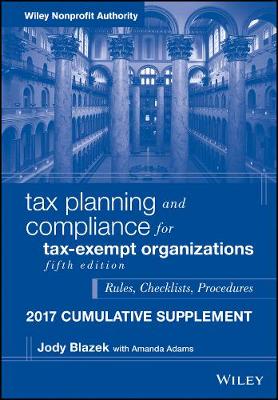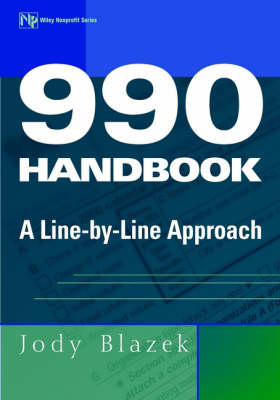Nonprofit Law, Finance & Management S.
2 total works
Tax rules and regulations change annually, and nonprofit organizations know that staying compliant means staying up to date. But wading through tax code is less than helpful in the field, whereas the clear, practically oriented instruction inside provides the quick reference accountants, lawyers, and executives need. In the latest edition of Tax Planning and Compliance for Tax-Exempt Organizations, you'll find straightforward information on changing Unrelated Business Income (UBI) rules, joint ventures, sponsorships, deductions against UBI, preparation of IRS forms, and more.
Nonprofit organizations—including health and welfare organizations, colleges and universities, private foundations, churches, libraries, museums, cultural institutions, and other smaller groups—contend daily with the possibility of losing their tax-exempt status. From qualifying and applying for that status, to maintaining and managing it, every nonprofit organization must plan and monitor ongoing procedures, activities, and forms to comply with federal, state, and local regulations.
- Access easy checklists for reporting, compliance, eligibility, and more
- Examine sample bylaws, applications, and forms
- Utilize comparison charts and other visual aids for easy reference
- Review bullet lists that compare what is and what is not acceptable
Tax Planning and Compliance for Tax-Exempt Organizations is an indispensable guide to navigating the complex maze of nonprofit tax rules and regulations.
Blazek is widely recognized for her ability to translate complicated concepts into understandable language and explain the why and how Forms 990 should be prepared. In this book, readers will find: Comprehensive, fill-in forms with line-by-line instructions including a synopsis of applicable tax issues Explanation of consequences of answers that can have several consequences Suggestions for dealing with the IRS as an organization grows and changes Ways to maximize deductions in calculating tax due on unrelated business income Tips for successful navigation of the interactive parts of Form 990-PF and reducing excise tax

